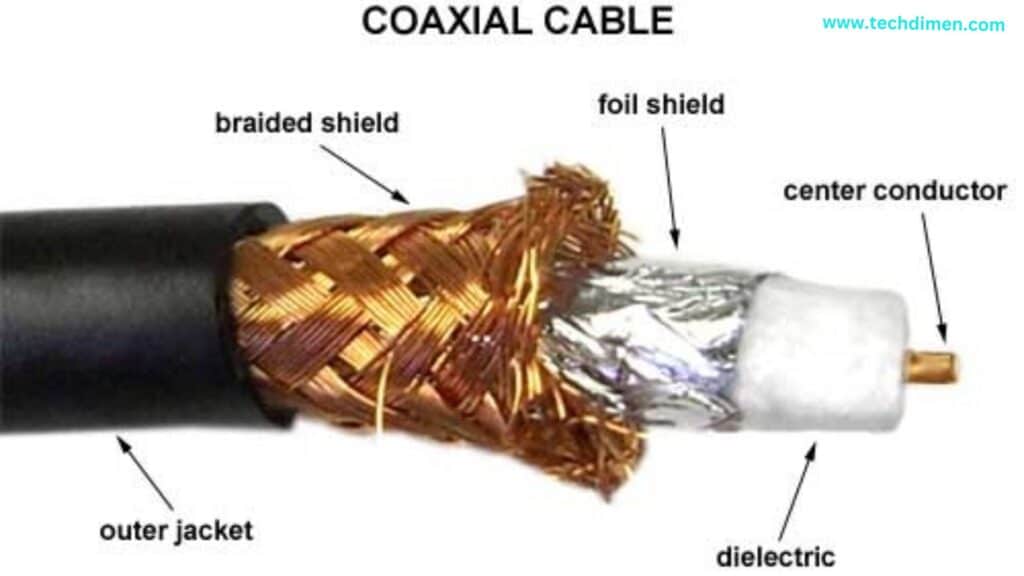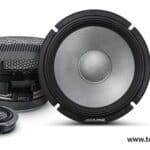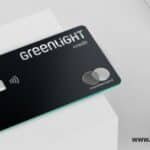Coaxial cable, known simply as “coax,” has remained a mainstay of connectivity for decades. In an era dominated by fiber optics and wireless networks, coaxial cable continues to shine for its versatility and reliable performance. This extensive guide will answer the core question what is coaxial cable and explore its wide ranging uses, types, connectors, performance factors, and more. Whether you’re connecting to the internet, setting up a TV, or wiring a security camera system, you’ll find everything you need to know right here.
What Coaxial Cable Is
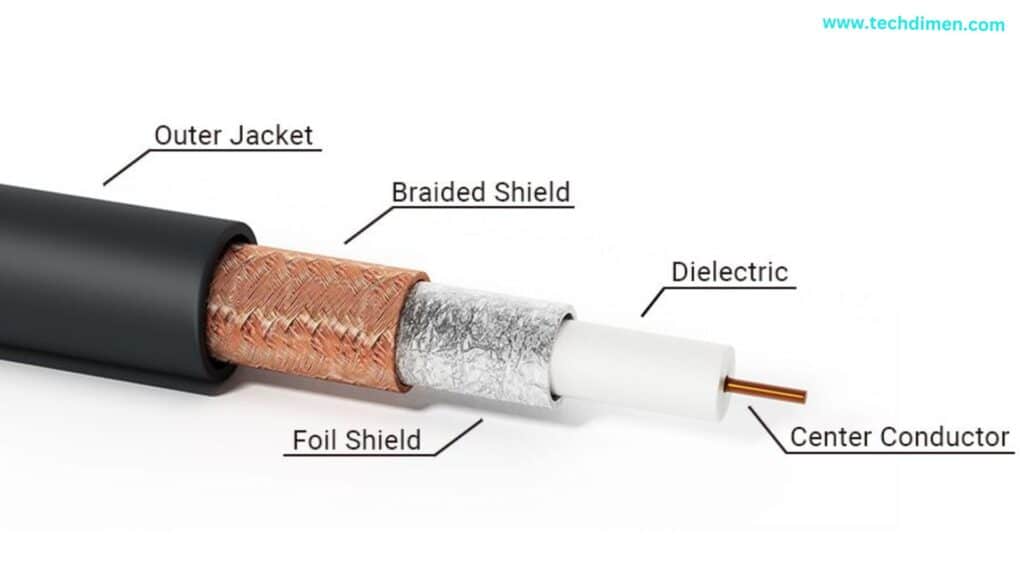
At its simplest, a coaxial cable consists of a central conductor wrapped by an insulating dielectric layer, encased in a metallic shield, and protected by an outer jacket. The geometry of this design ensures efficient digital signal transmission while minimizing external interference. With a fixed impedance usually 75 ohms coaxial cable became a standard for both analog and digital communication.
Originally developed for military and telephone systems, modern coax has adapted to serve coaxial cable applications in television, broadband, satellite reception, security surveillance, and professional audio/video setups. Its balanced combination of shielding and signal conduction continues to outperform other cable types in many residential and commercial use cases.
How Coaxial Cable Works
Coaxial cable operates by directing electrical signals through its center conductor, while the surrounding shielding absorbs stray electromagnetic interference. This principle preserves signal integrity over considerable lengths, particularly when the shielding is solid or enhanced. Analog video signals, digital TV transmissions, broadband internet connections, and RF signals all travel efficiently through a quality made coax.
When a cable carries high-frequency data, like that needed for streaming 4K video, interference from nearby electronics or power lines can degrade the signal. That’s where the metallic shield plays its vital role it keeps noise out and prevents signal loss. In this world applications, this design enables coaxial cable to support both residential cable TV and military-grade broadcast environments.
in this World Applications of Coaxial Cable
Whether delivering programming from cable operators or satellite providers, coaxial cable is the default medium. From homes streaming HD and 4K cable TV to rural setups using satellite dish coaxial, the cable carries high bandwidth signals with minimal interruption. Upgrading to RG-6 quad shield vs dual shield options ensures superior signal quality, especially in digital formats.
Internet and Broadband Connectivity
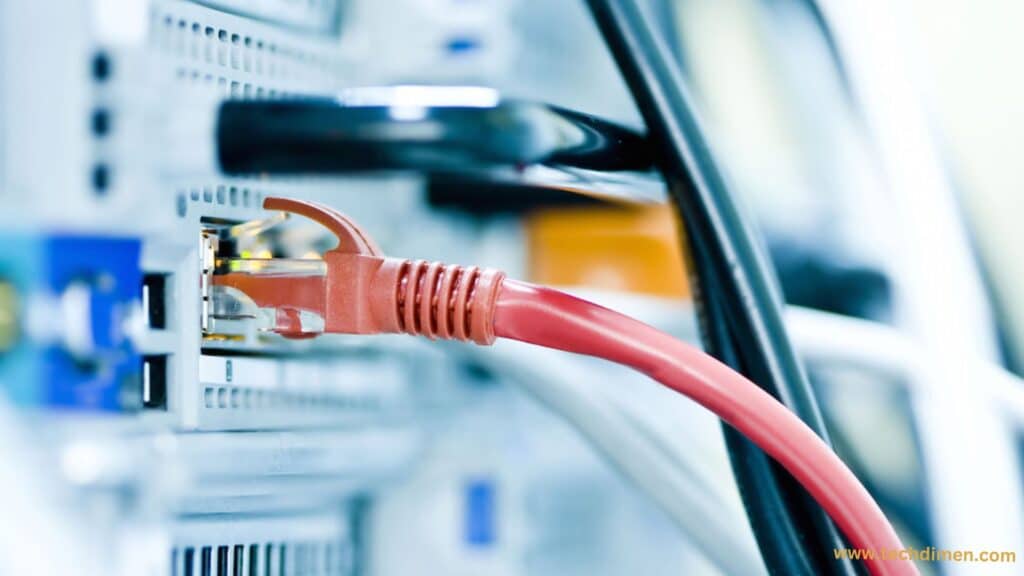
Internet service providers such as Xfinity and Comcast rely heavily on coaxial cable for internet services. These companies use DOCSIS technology to transmit broadband via RG‑6 coaxial cable. This setup enables fast downstream and upstream speeds while keeping installation affordable and dependable. A typical cable modem setup involves running coaxial cable directly into a splitter that feeds both a TV tuner and an internet modem, demonstrating its dual-use capability.
Security Camera and CCTV Systems
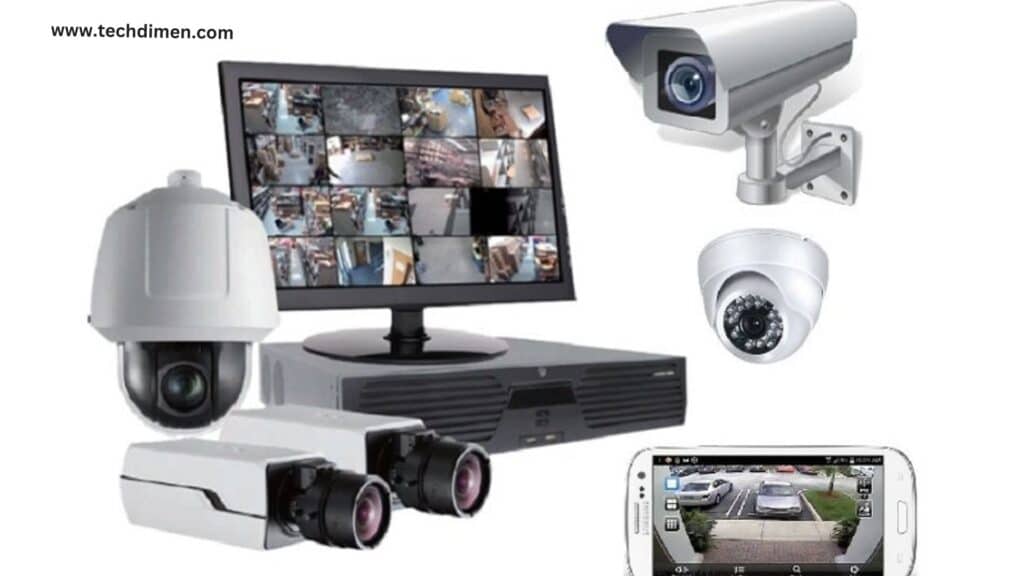
Many analog CCTV and security surveillance systems still depend on coaxial cable. Basic cameras use RG-59 coaxial cable, while HD systems with formats like HD-TVI and HD-CVI perform better. Here, strong shielding is important to reduce noise. In cases where power is delivered alongside video, siamese cable variants become popular in DIY setups, combining power and video wires in one jacket for convenience.
Professional Audio/Video Installations
In professional environments broadcast studios, filmmaking sets, live venues coaxial cable applications include RF signal routing and high fidelity audio transmission. Engineers often rely on BNC connectors for their tight fit and reliability. Coax remains the go to for ensuring low interference signal paths in critical A/V setups, even amid crowded electronic environments.
Ham Radio and RF Communications

Hobbyists and operators in amateur (ham) radio depend on coaxial cables for clarity in RF transmission. Whether deploying a rooftop antenna or linking transceivers, coaxial ensures consistent impedance and low signal loss. Many hams prefer RG‑6 or RG‑11 cables combined with durable connectors to maintain clean, stable RF signals.
Exploring Types of Coaxial Cables
Knowing which type of coaxial cable suits your project is key. Differences in impedance, shielding, and physical attributes affect signal quality and performance per usage scenario.
RG‑59 75 Ω cable, with its higher loss over distance, is most effective for short analog video runs under 50 feet. It works well for household CCTV installations but shows its limitations over longer stretches or with digital signals.
RG‑6 75 Ω cable offers better signal protection and lower attenuation, making it the most common choice for both coaxial cable for TV and coaxial cable for internet. With the same impedance as RG‑59 but improved performance, RG‑6 strikes the best balance for residential use.
RG‑11 75 Ω cable delivers even lower loss and greater diameter, making it ideal for runs exceeding 100 feet or situations where signal integrity over long distances is critical.
Now, shielding quality matters. Dual-shield cables use two layers of protection against electromagnetic interference, while quad shield coax adds two more foil layers. These extra layers are vital in urban labs, industrial settings, or near high-power broadcast sources.
For unique installations, plenum rated coax cable provides a fire resistant option suitable for in wall or ceiling environments, while siamese coax combines video and power conductors perfect for surveillance applications.
How to Choose the Right Coaxial Cable
Start by considering how far the cable must run. If you plan a route longer than 100 feet, especially outdoors or between buildings, RG‑11 long distance cable becomes a smart investment. Shorter runs under 50 feet typically do well with RG‑6, and even some RG‑59 variants.
The type of signal you need to carry also influences choice. Basic analog feeds like standard-definition video don’t demand heavy shielding. By contrast, a 4K digital feed requires robust interference protection. Urban areas, power lines, and wireless networks all boost interference risks, making quad shield coaxial cable the safer bet.
Outdoor rated cable matters for roof mounted satellite or weather-exposed layouts. Its UV resistant jackets and waterproof connectors offer long term durability. When running cable indoors through enclosed cavities, opt for plenum-rated cable to comply with building codes and maintain safety.
Connector quality shouldn’t be overlooked. F-type connectors are the standard for residential installations. They’re easy to install and provide robust, reliable connections. For professional setups, engineers rely on BNC connectors for their high performance lock mechanism. In external installations, gold plated coax connectors bring extra corrosion resistance.
Some setups need more than just cable. Wiring a multi room entertainment system means using a coaxial cable splitter, though each split can reduce signal strength. Inserting a coaxial cable amplifier ensures both your TV and modem receive unblemished signal strength. For two way data like returned broadband signals you may need a return path amplifier, keeping upstream data strong.
Maximizing Coaxial Cable Performance
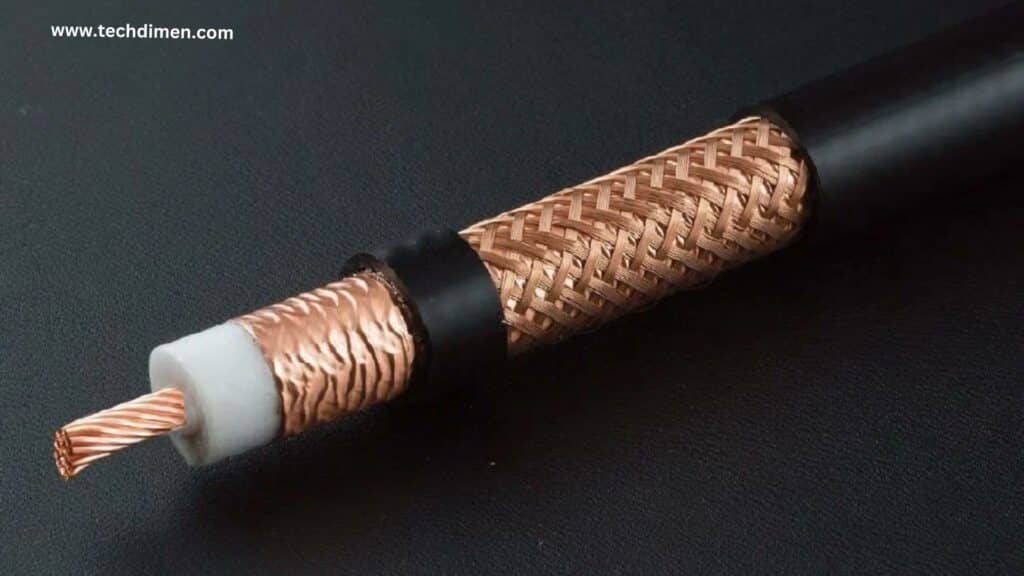
Signal quality depends on multiple technical factors. Attenuation, or signal loss, increases with length. As a rule of thumb, an RG‑6 cable loses about 6 to 7 dB per 100 feet at high frequencies like 1 GHz. For longer runs, RG‑11 with its thicker conductor and shielding mitigates some of that loss.
Electromagnetic interference (EMI) can degrade your connection. Proper shielding, tight connectors, and occasionally, metallic conduit, preserve signal clarity. Wrap connectors carefully; the braid should reach the screw end, protecting internal conductors from stray signals.
Connector installation also matters. Improperly installed connectors create reflections and signal leakage. You can’t just push them on. You’ll need proper tools crimpers, compression tools and torque wrenches to ensure a consistent, reliable interface.
Outdoor installations come with their own challenges. UV exposure and grounding issues call for cables with UV-resistant jackets and proper grounding via ground blocks. You’ll also benefit from waterproof connectors or heat-shrink sleeves that protect against moisture.
Which Brands Deliver the Best Coaxial Cable?
Several manufacturers are trusted in 2025 for their coaxial cables. Belden sets the industry standard with broadcast-grade cables offering robust design and excellent signal integrity. Southwire specializes in in-wall and residential-grade cable that often doubles as plenum-rated options. Mediabridge has earned popularity among consumers for competitive pricing and reliable shielding. Monoprice makes a solid choice for DIY or budget-conscious setups, delivering high quality at accessible prices. For those seeking ultimate broadcast performance, Canare and Times Microwave top the list where precision-engineered cables can make or break professional A/V systems. Always check for UL or CUL listings, multi-layer shielding, and weatherproof connector options when purchasing.
Common Myths and Their Reality
There’s a persistent myth that all coaxial cables work the same. In reality, specifications like impedance, shielding quality, and run length can dramatically affect performance. Another misconception is that digital signals are tolerant of cheap cables. Even digital data deteriorates over distance and with noisy environments. Lastly, price doesn’t always equate to performance some pricey cables don’t offer extra shielding, and some budget models perform just as well. Check specs rather than price tags.
Alternatives to Coaxial Cable
Though versatile, coax isn’t always the best choice. For purely data-centric runs, Ethernet cables like Cat5e or Cat6 deliver reliable connections and standardized network performance. Fiber-optic cables excel over long distances and resist lightning or electrical interference, though they come with higher installation costs. If you just need a local audio/video connection, HDMI cables are suitable. For instant deployment and convenience, wireless solutions like Wi-Fi or 5G are attractive but they rarely match coaxial cable’s stability and consistent data rates.
this World Case Study
A homeowner experienced intermittent signal loss on a long 200-foot RG‑6 cable run. After switching to quad-shield RG‑11, installing a powered splitter, and using gold-plated F-type connectors, they properly grounded the setup. The result was remarkable. HD TV playback became crystal clear and broadband speeds hit 500 Mbps, with signal strength improving from –10 dBmV to +2 dBmV. This example highlights the importance of using the right components and installation techniques.
Table: What Is Coaxial Cable Used For?
| Use Case | Description | Common Examples |
|---|---|---|
| Television Signal Transmission | Carries analog or digital TV signals | Cable TV, set-top boxes, DVRs |
| Internet/Broadband Connections | Transmits high-speed data from ISP to modem/router | Xfinity, Spectrum, DOCSIS 3.0/3.1 modems |
| Satellite TV Signal Delivery | Connects satellite dishes to receivers | Dish Network, DirecTV |
| Radio Frequency (RF) Transmission | Transfers RF signals between devices | Ham radios, antennas, RF test equipment |
| CCTV Security Systems | Delivers video from analog cameras to DVRs via BNC connectors | Surveillance systems, Siamese coax setups |
| Professional A/V & Broadcast | Handles high-fidelity audio/video signals in professional setups | Broadcast studios, sound engineering setups |
| In-Building Signal Distribution | Distributes TV and network signals across multi-unit buildings | Hotels, schools, hospitals, offices |
| Home Theater Systems | Sends digital audio signals to receivers or speakers | S/PDIF coaxial audio connections |
| Test & Measurement Equipment | Carries precise electronic signals for calibration or testing | Lab oscilloscopes, signal generators, network analyzers |
FAQs
What is coaxial cable used for today?
In 2025, coaxial cable remains a trusted solution for transmitting television signals, delivering broadband internet, connecting satellite systems, and running analog CCTV video feeds. It also plays a major role in radio frequency transmission and professional audio/video installations due to its reliable shielding and stable signal performance.
Can coaxial cable be used for both internet and TV?
Yes, you can absolutely use the same coaxial cable to support both internet and TV services. Internet providers like Xfinity and Spectrum commonly run both through one line using a splitter or a combination modem/router device.
What devices rely on coaxial cable?
Coaxial cables are still essential for connecting devices like cable modems, digital video recorders (DVRs), set-top boxes, satellite receivers, ham radios, RF test equipment, and analog security cameras. Any system that requires consistent, low-interference signal delivery can benefit from coaxial cable.
Is coaxial cable still used in 2025?
Yes, despite the growth of technologies like fiber optic and HDMI, coaxial cable continues to be widely used. Its ability to carry high-frequency signals over long distances with minimal interference keeps it relevant for both home and commercial applications.
What’s the difference between RG-6 and RG-59 coaxial cables?
The main difference comes down to performance and construction. RG-6 has better shielding and a thicker core, which allows it to handle HD video and broadband internet more efficiently. RG-59 is thinner and typically used for short analog video runs or older CCTV systems. For most modern installations, RG-6 is the preferred choice.
How long can a coaxial cable run before losing signal quality?
Cable length affects signal quality, and different types handle it differently. RG 6 cables can run up to 100 feet without noticeable signal loss, while RG-11 cables support even longer distances often over 300 feet thanks to their low attenuation design. If your setup requires extended runs, using an amplifier may help preserve signal strength.
Can coaxial cable affect internet speed?
Yes, it can. Poor-quality or damaged coaxial cables may cause interference, data packet loss, or reduced bandwidth. To maintain fast and stable speeds, it’s important to use high-quality, properly shielded coaxial cables rated for broadband use.
Is any coaxial cable suitable for internet?
Not all coaxial cables are created equal. For internet, RG-6 or RG-11 cables are recommended because they are designed for broadband speeds and offer strong shielding. Avoid using older types like RG-59 for internet connections, as they don’t support high-speed data as effectively.
Are all coaxial cables the same?
They may look similar on the outside, but coaxial cables vary in impedance, shielding, signal capacity, and intended use. Choosing the right type is crucial. For instance, using RG-59 instead of RG-6 for an internet modem could lead to weak signals and unstable performance.
Do gold-plated coaxial connectors actually improve performance?
Gold-plated connectors don’t necessarily improve the signal itself, but they do offer better resistance to corrosion and ensure a more stable connection over time especially in environments exposed to moisture or humidity. They’re a smart choice for long-term reliability, even if they don’t directly boost signal strength.
Final Thoughts
Coaxial cable continues to deliver exceptional value in both modern and legacy systems. From broadcasting to broadband to CCTV, coaxial cable remains a dependable choice. Understanding types of coaxial cables, connectors, shielding options, and installation methods helps you build a reliable, high-performing setup. Whether you need to decide between RG‑6 vs RG‑11, want to upgrade your coaxial cable for internet and TV, or just want a cleaner signal at home, you now have the complete guide.

Jhon AJS is a tech enthusiast and author at Tech Dimen, where he explores the latest trends in technology and TV dimensions. With a passion for simplifying complex topics, Jhon aims to make tech accessible and engaging for readers of all levels.

